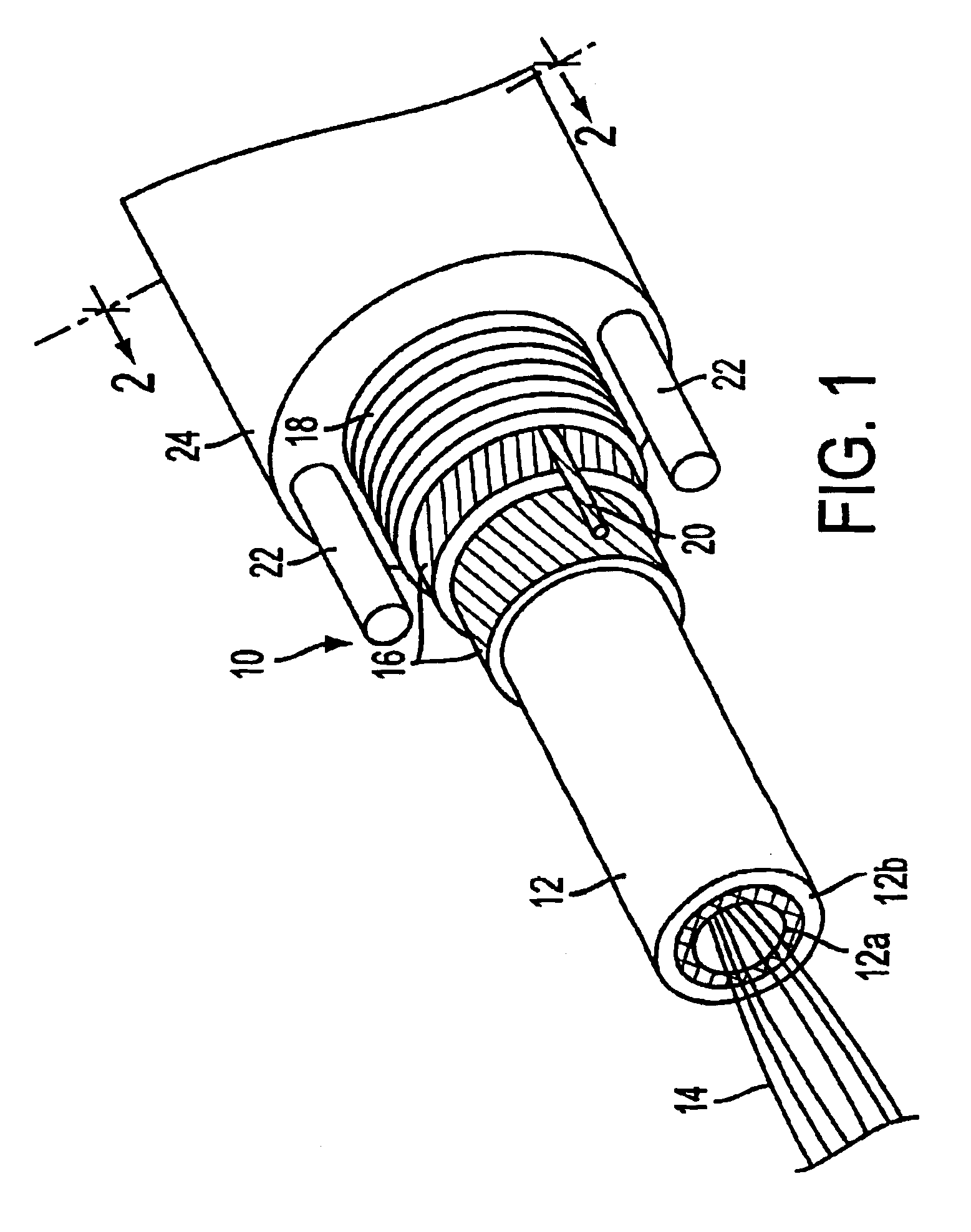Buffer tube design for easy and reliable access in mid-span
a buffer tube and mid-span technology, applied in the direction of optics, fibre mechanical structures, instruments, etc., can solve the problems of affecting the access of placing tensile or compressive loads on the optical fibers residing therein, damaged or broken optical fibers, etc., and achieves the effect of reducing the difficulty of accessing optical fibers in mid-span, reducing the difficulty of tensile or compressive loads
- Summary
- Abstract
- Description
- Claims
- Application Information
AI Technical Summary
Benefits of technology
Problems solved by technology
Method used
Image
Examples
Embodiment Construction
The present invention, according to the first embodiment, contemplates a buffer tube with a dual layer buffer tube wall. The inner layer, which is closest to the optical fibers, is more notch-sensitive than the outer layer. It is intended that a cut be made through the entire outer layer, but only partially into the inner layer. Because of its relatively high notch-sensitivity, the cut in the inner layer easily propagates through the inner layer so that the optical fiber contents of the buffer tube are easily exposed. The outer buffer tube layer surrounds the outside of the inner buffer tube layer and provides much of the structural and barrier properties typically required by buffer tube walls.
In a preferred embodiment, dual layer extrusion is used to manufacture a dual layer buffer tube having inner and outer layers. The outer layer may be a material conventionally used for buffer tube walls, such as polybutylene terephtalate. The inner layer may be made from a material having a r...
PUM
 Login to View More
Login to View More Abstract
Description
Claims
Application Information
 Login to View More
Login to View More - R&D
- Intellectual Property
- Life Sciences
- Materials
- Tech Scout
- Unparalleled Data Quality
- Higher Quality Content
- 60% Fewer Hallucinations
Browse by: Latest US Patents, China's latest patents, Technical Efficacy Thesaurus, Application Domain, Technology Topic, Popular Technical Reports.
© 2025 PatSnap. All rights reserved.Legal|Privacy policy|Modern Slavery Act Transparency Statement|Sitemap|About US| Contact US: help@patsnap.com



